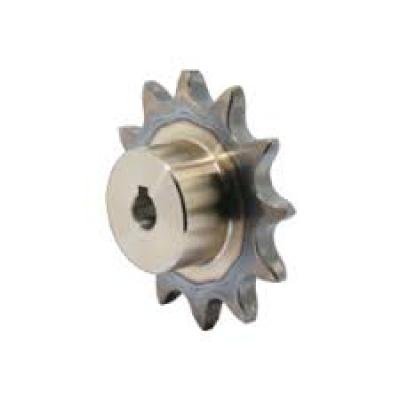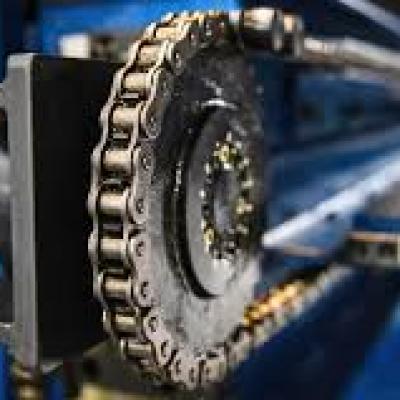The main parameters and corresponding meanings of synchronous belt pulley
1. The number of teeth of the pulley
The number of teeth of the belt wheel is an important parameter of the synchronous toothed belt wheel. It directly affects the structure of the transmission and the service life of the timing belt. When the transmission ratio has been set, the use of a small number of teeth of the synchronous belt wheel can make the transmission structure compact and save material and manufacturing costs. However, if the number of teeth of the small pulley is too small, the number of teeth meshed at the same time when the timing belt is wrapped on the Timing Pulley will be reduced, which will easily cause the belt teeth to be cut due to excessive load. In addition, if the number of teeth of the small belt wheel is too small, the diameter of the synchronous wheel will be reduced, and when the belt enters the belt wheel, the bending stress of the belt will increase, which is easy to cause the synchronous belt to produce bending fatigue damage. Therefore, there is a certain limit to the number of teeth of the small pulley, the minimum number of teeth allowed.
As the belt pitch increases, the minimum allowable number of teeth of the pulley increases. This is because the larger the belt pitch, the corresponding increase in the size of each part of the belt, which reduces the flexibility of the belt and the ability to adapt to bending. For the pitch, the small synchronous pulley should use a larger number of teeth. Similarly, as the speed of the synchronous wheel increases, the number of times the belt enters the pulley per unit time increases, and the number of times the corresponding belt bears the bending stress also increases. In order to improve the bending fatigue life of the belt, the number of teeth of the pulley should be appropriately increased.
2. Pitch circle and pitch of pulley
The smooth meshing of the synchronous belt and the pulley should meet two conditions:
1. There is a circle on the synchronous wheel that is tangent to the pitch line of the belt, and pure rolling is implemented.
2. The distance measured by the corresponding points of two adjacent teeth on the pulley on this circle should be equal to the pitch Pb of the timing belt.
If these two conditions can be met, the smooth meshing of the timing belt and the pulley can be ensured. The circle tangent to the belt pitch line on the synchronous pulley is called the pitch circle of the pulley. The distance between the corresponding points of the two adjacent teeth measured on the pitch circle is called the pitch of the pulley, which is represented by Pp. If the number of teeth of the pulley is z and the pitch is Pp, then the pitch diameter of the pulley is d=ZPp/π(mm)
It can be seen from the above formula that the pulley pitch circle diameter can be obtained according to the number of teeth Z of the pulley and the pitch Pp. But when the calculated pulley pitch circle diameter is smaller than the bandwidth, in order to avoid affecting the belt life, the pulley diameter should be appropriately increased.
3. The tooth profile angle of the pulley
The tooth profile angle of the belt wheel has a great influence on the meshing and transmission performance of the belt teeth and the Gear teeth. When the tooth profile angle is too small, the tooth groove shape of the synchronous gear is similar to a rectangle. When the belt teeth enter the mesh, it will cause greater interference, and it is easy to cause wear and local fracture of the toothed working surface. If the tooth profile angle is too large, the radial component of the normal force of the gear teeth on the toothed working surface will be too large, and the belt teeth will slide outward along the tooth groove of the gear, which is easy to cause the phenomenon of belt crawling and tooth skipping. . According to the test by Koyama Fuo of Japan, when Φ=20°-30°, the interference between the gear teeth and the belt teeth is small, and the tooth profile angle is similar to that of the timing belt, which is the most suitable. Therefore, the commonly used gear tooth profile angle is 20°-25°, and the tooth profile angle deviation is generally required to be within plus or minus 1.5°.




